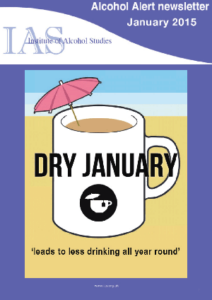In this month’s alert
Editorial – January 2015
Welcome to the January edition of Alcohol Alert, the Institute of Alcohol Studies newsletter, covering the latest updates on UK alcohol policy matters. In this issue, Dr Richard de Visser reports the findings from an independent study into the effects of Dry January on participants’ drinking habits. In other news: the Alcohol Health Alliance calls for a ban on alcohol sponsorship of sports; Public Health Minister Jane Ellison MP expresses “frustration” at not being able to give tax breaks to low-alcohol drinks; while Shadow Health Minister Luciana Berger MP pledges the Labour Party will “stand up to vested interests” on alcohol policy.
Please click on the article titles to read them. We hope you enjoy this edition.
Dry January “leads to less drinking all year round”
As the 2015 Dry January campaign launches, new academic research shows that participants who have completed Alcohol Concern’s behaviour change campaign are now drinking less, and also drinking in less harmful ways. The evidence shows six months after completing a Dry January, participants are now not only drinking less frequently and drinking less per drinking day, but they’re also getting drunk less.
The research, compiled independently by the University of Sussex, comes after Alcohol Concern released figures which showed that 9.6 million people in England are now drinking in excess of recommended daily limits.
The headline results after six months are:
- 72% of participants had sustained reduced levels of harmful drinking six months after completing Dry January
- The 23% of people who had “harmful” alcohol consumption when they started Dry January are now in the “low risk” category
- 4% of participants were still dry six months on
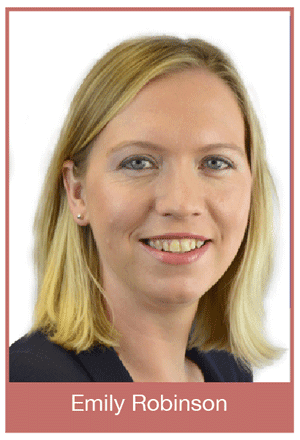 Speaking on the launch of Dry January, Emily Robinson, Director of Campaigns at Alcohol Concern, said: “The long term effects of Dry January have previously been questioned, with people asking if a month booze-free would cause people to binge drink once the 1st February comes around. This research is the proof of how, with the help, advice and support we offer throughout the month, our model can really change behaviour and reduce drinking.
Speaking on the launch of Dry January, Emily Robinson, Director of Campaigns at Alcohol Concern, said: “The long term effects of Dry January have previously been questioned, with people asking if a month booze-free would cause people to binge drink once the 1st February comes around. This research is the proof of how, with the help, advice and support we offer throughout the month, our model can really change behaviour and reduce drinking.
“Given the huge burden alcohol misuse has on society as a whole, we need the government to take action at a national level, but we also believe Alcohol Concern’s Dry January campaign can really help individuals take a positive step towards cutting down their drinking and improving their health.”
In addition to these changes toward healthier drinking, the research found that after completing Dry January both men and women felt more confident that they could refuse alcohol in social situations, when feeling worried or upset, and in situations where they would normally have had a drink.
The research also highlighted that taking part in Dry January was linked to reductions in alcohol consumption and increased confidence to say no to a drink, regardless of success of completing the month. It was the act of committing to the campaign that was important.
Dr Richard De Visser, Senior Lecturer at the University of Sussex, who led the research, said: “What’s really interesting to see is that these changes in alcohol consumption were also seen in the participants who didn’t complete the whole month alcohol-free. Even if participants took part but didn’t successfully complete the 31 days, it generally led to a significant decrease across all the measures of alcohol intake.”
The new Dry January campaign will be run in partnership with Public Health England.
Professor Kevin Fenton, National Director of Health and Wellbeing at Public Health England, said: “We are very pleased to be partnering with Alcohol Concern on Dry January as research has shown that a month of abstinence can help people reset their relationship with alcohol.
“Over consumption of alcohol is a causal factor in more than 60 medical conditions including cancer, depression and dementia and yet more than half of adults who drink do so at a level above the recommended guidance. Dry January has proved to be successful in helping people moderate their drinking and benefit from a healthier lifestyle, which is why Public Health England is supporting the initiative.”
After completing Dry January, participants also highlighted what benefits they experienced after 31 days alcohol-free:
- 82% of participants felt a sense of achievement
- 79% of participants saved money
- 62% of participants had better sleep
- 62% of participants had more energy
- 49% of participants lost weight
Jane Appleton, a Dry January participant, said: “I first took part in Dry January in 2013. A few years of some stressful jobs had left me reaching for the red wine at night as an automatic response and I knew that wasn’t great.
“Both years I have started February feeling fantastically healthy. Dry January has definitely changed my attitude to drinking.”
Please follow our Soundcloud link to hear Dr De Visser speak about the research team’s approach to collecting data for evaluation, the challenges faced in doing so, and the wider health implications of participating in Dry January from the study’s findings.
Government seeks to encourage move to lower strength drinks
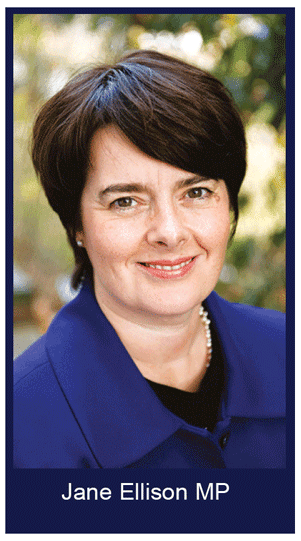 EU an obstruction
EU an obstruction
The Government is seeking to restructure alcohol taxes to allow tax reductions for lower strength wine. However, European Union law currently prevents wine being taxed according to its alcoholic strength.
As reported in the Daily Telegraph, Jane Ellison, the Public Health Minister, told a Parliamentary committee she had been in talks with major retailers, including the big supermarkets, amid concerns that the alcohol strength of wine had increased significantly in the last 30 years.
Giving evidence to the House of Lords EU Home Affairs, Health and Education Committee, the Minister said it was a “frustration” that under current European law, it was not possible to give tax breaks to low-alcohol drinks.
She said she had written to the Treasury to ask for action to be taken at EU level to address the problem.
“There are some areas of frustration,” she said. “We do need to return the flexibility, to be able to go further. One of my particular interests would be in trying to use market forces to drive the low-alcohol market. Over time we have seen the level of alcohol in wine creep up and up and up. I would love to be able to do more to create more of a market for these low alcohol products.”
Under present rules, wine must be taxed at the same rate regardless of its strength. The Government supports the introduction of more favourable taxes for wine containing less alcohol, as is the case for beer.
Mrs Ellison said that if the tax regime could be used to help the low-alcohol market, it could create a “shopping revolution” in supermarkets. “I want them to have that flexibility to do that,” she said, adding that, at present, there were “long-standing, entrenched reasons” why it was not possible.
Under current EU labelling laws, products may not be described as wine unless they contain more than 5% alcohol.
A spokesman for the Department of Health was reported by the Daily Telegraph as saying that the Government supported any future changes to the EU rules to allow duty on wine to rise in line with alcoholic strength, as was the case with beer. However, such a change would need agreement across Member countries of the EU.
“In the meantime we continue to work on ways to help people drink less, including through encouraging the availability and choice of lower strength products.”
Mrs Ellison said the UK had also been prevented from requiring retailers to include a calorie count on alcohol labels.
She said she was instead trying to persuade the big supermarkets to introduce voluntary calorie counts, as part of the drive to tackle the obesity problem.
Labour will “stand up to vested interests” on alcohol policy

Labour’s shadow public health minister, Luciana Berger, announced Labour’s plans for tackling the problem of alcohol harm at Alcohol Concern’s 2014 Annual Conference. Ms Berger pleased her audience by saying that her party would “stand up to big ‘vested interests’ and push for more than just voluntary action to tackle alcohol-related harm” if they win the election in 2015.
Ms Berger confirmed Labour was in favour of introducing a fifth licensing objective to protect and promote public health. This is a measure for which most of the public health community have been calling for some time.Also in regard to licensing, Ms Berger said that Labour “want it to be easier for communities to stop their high streets being overrun with new bars. And so we are committed to reviewing the licensing system with a view to enhancing the voice of local communities in licensing decisions. As part of this review we want to look at whether local councils should have more power to strengthen the conditions on licensed premises. And alongside this we want to make public health a mandatory factor to be taken into account in licensing.”
She also recognised the damaging effect of high-strength, low-cost alcoholic products and promised ‘targeted action’, as well as committing the party to a serious ‘rethink and review’ of the promotion of alcoholic products, particularly in relation to children.
It is difficult to assess the likely practical consequences for policy of Labour’s new standpoint, but if Ms Berger’s remarks are taken literally, the Party may be contemplating a fairly radical overhaul of its own Licensing Act, in certain respects possibly even a complete U-turn.
The Licensing Act 2003, as originally conceived, was designed directly to prevent communities exercising control over the number of licensed outlets trading locally, or over the hours during which they operated. Not only did the Labour Government refuse to include in the Act a Scottish-style ‘over-provision’ criterion, it also insisted that each application for a new licence had to be considered individually on its own merits, and it barred local residents from objecting to any licence unless they lived within its immediate vicinity, which was normally interpreted to mean within around 100 yards. The only exception, which was finally wrung out of the Government as a concession, was in relation to specified areas of ‘cumulative impact’. It is possible, therefore, that the changes that Labour may now be considering are such that effectively a new licensing act would be required to introduce them.
In regard to other measures, targeted action against high-strength, low cost alcohol products could mean the incorporation of Suffolk-style restrictions on sales of super-strength lager and cider into mandatory licensing conditions, or it could mean reforms to the system of alcohol taxation, or a combination of the two. However, in her speech, Ms Berger appears not to have made any explicit reference to alcohol taxation, despite this being regarded by the public health community as perhaps the key policy lever available to governments.
Alcohol Health Alliance calls for sponsorship ban
The Alcohol Health Alliance has called for an end to alcohol sponsorship of sporting events.
In a letter to the Guardian newspaper, Professor Sir Ian Gilmour, Chair of the AHA, complains that, in the UK, alcohol sponsorship “is as commonplace as advertising for cereal or soap powder” and that viewers of the World Cup in 2014, including millions of children and young people, saw one example of alcohol advertising for every minute of playing time.
Sir Ian continued:
“Shouldn’t our national sports be inspiring our children to lead healthy and positive lifestyles? It would be considered outrageous if high profile teams like Everton were to become brand ambassadors for tobacco, and so why is it acceptable for alcohol?
Our children deserve a better future and we must take the opportunity to give it to them. Self-regulation of alcohol advertising isn’t working when it allows drink brands to dominate sporting events that attract children as well as adults, creating automatic associations between alcohol brands and sport that are cumulative, unconscious and built up over years. Importantly, evidence shows that exposure to alcohol advertising leads young people to drink more and to drink at an earlier age.
2015 will be a year of change. The public supports restrictions on alcohol advertising and it’s time for the Government to listen to the people rather than big business. Let’s take action to protect our children by ensuring that the sports we watch promote healthy lifestyles and inspire participation, not a drinking culture.”
International concern
In calling for an end to alcohol sports sponsorship, the AHA is adding its weight to international pressure to put a stop to a multi-million dollar practice which has become a global concern. France has banned alcohol sports sponsorship for many years, and serves as a model for campaigners in English-speaking countries. In Ireland, following a vigorous campaign by the public health and alcohol control community, the Department of Health issued a proposal to phase out alcohol sports sponsorship by the year 2020. However, the proposal was rejected by the Oireachtas (Irish Parliament) Joint Committee on Transport and Communications. This recommended that the sponsorship of sporting events by the alcohol drinks industry should remain in place until such time as it can be replaced by other identifiable streams of comparable funding.
The Committee also recommends that a fixed percentage of all sponsorship received by sporting and cultural organisations from the alcohol drinks industry should be ring-fenced for alcohol and substance abuse prevention programmes.
Committee Vice-Chairman John O’Mahony TD said:
“Some Committee Members were firmly of the view that sponsorship by alcohol drinks companies should be phased out …. however, the majority held the view that the link between sponsorship and the misuse of alcohol in society had not been established and, consequently, the Committee feels that banning sponsorship of sports by the alcohol industry is not merited at this time. In the current economic climate, ….. the main sporting organisations in this country would suffer inordinately if legislation for such a prohibition was introduced.”
Alcohol Action Ireland, the national charity for alcohol related issues, condemned the Committee’s recommendations, saying that a failure to implement a ban on alcohol sponsorship of sports would be a failure to protect future generations from alcohol-related harm, and that the Committee had ignored the evidence on the impact of alcohol marketing on young people.
New Zealand appears now to be embarking on a similar process of political dispute and negotiation regarding the issue. The New Zealand Government established a Ministerial Forum on alcohol advertising and sponsorship in February 2014. The purpose of the Forum was to consider whether further restrictions on alcohol advertising and sponsorship were needed to reduce alcohol-related harm. It reported to the Minister of Justice and the Associate Minister of Health in October 2014, and the Forum report, published in December 2014, made a number of recommendations for reducing youth exposure to alcohol marketing through sponsorship:
- Ban alcohol sponsorship of all streamed and broadcast sports
- Ban alcohol sponsorship of sports (long-term)
- Ban alcohol sponsorship (naming rights) at all venues
- Ban alcohol sponsorship of cultural and music events where 10% or more of participants and audiences are younger than 18
- Introduce a sponsorship replacement funding programme
- Introduce a targeted programme to reduce reliance on alcohol sponsorship funding
However, given the importance of alcohol sports sponsorship in New Zealand it is likely that a prolonged battle lies ahead to get the recommendations implemented.
Minimum unit price for alcohol would save lives and reduce crime in Wales – new report
Introducing a minimum unit price for alcohol would reduce alcohol consumption, alcohol-related deaths, hospital admissions and crime, an independent study reveals. The study, commissioned by the Welsh Government, concludes that introducing a minimum unit price of 50p would be worth £882m to the Welsh economy in terms of reductions in illness, crime and sickness absence over 20 years.
Ministers commissioned experts at Sheffield University to look at the impact of a minimum unit price for alcohol if introduced in Wales – the Public Health White Paper contained such a proposal.
The research also models how such a move would impact on people’s spending habits in Wales.
The report’s key findings include:
- minimum unit pricing (MUP) policies would be effective in reducing alcohol consumption, alcohol-related harms, including alcohol-related deaths, hospitalisations, crimes and workplace absences, and the costs associated with those harms
- a ban selling alcohol for below the cost of duty plus the VAT payable on that duty would have a negligible impact on alcohol consumption or related harms
MUP policies would only have a small impact on ‘moderate drinkers’. Larger impacts would be experienced by ‘increasing risk drinkers’, with the most substantial effects being experienced by ‘high risk drinkers’
MUP policies would have a larger impact on those in poverty, particularly ‘high risk drinkers’, than those not in poverty. However, those in poverty also experience larger relative gains in health and the ‘high risk drinkers’ are estimated to marginally reduce their spending due to their reduced drinking under higher MUP levels.
The Sheffield report also outlines the estimated impacts of a minimum unit price policy of 50p per unit. The key findings from this are:
- across the whole population, 38.4% of units purchased would be affected
- across the whole population, mean weekly consumption is estimated to fall by 4%
- across the whole population, estimated spending increases by 1.6% or £10 per drinker per year or 19p per week
- effects on health are estimated to be substantial, with alcohol-attributable deaths estimated to reduce by approximately 53 per year after 20 years, by which time the full effects of the policy will be seen
- crime is estimated to fall by 3,700 offences a year overall. A similar reduction is seen across the three categories of crime – violent crimes, criminal damage and robbery, burglary and theft
- workplace absence is estimated to be reduced by 10,000 days per year
- the total societal value of these reductions in health, crime and workplace harms is estimated at £882m over the 20 year period modelled.
Health and Social Services Minister Mark Drakeford said:
“This latest Wales-specific research from Sheffield University is further evidence that introducing a minimum price for alcohol of 50p a unit will have significant benefits on the health of the nation, reducing alcohol misuse and drink-related harm.
“It would mean fewer alcohol-related deaths and ease the burden of alcohol-related harm on the Welsh NHS.
“This work builds on the advice of the Advisory Panel on Substance Misuse, which was published in July. It is no coincidence that as alcohol has become relatively cheaper, alcohol-related deaths and disease have increased.
“We will consider these findings and continue to develop our proposals with a view to introducing legislation.”
Northern Ireland to proceed with Alcohol Minimum Unit Pricing
Minimum Unit Price for alcohol would save 63 lives per year
Policy would reduce hospital admissions by more than 2,400
The Northern Ireland Executive has announced it will proceed with an Alcohol Minimum Unit Pricing policy, the move being informed by research commissioned from the University of Sheffield Alcohol Research Group, whose research has been influential in providing evidence to inform policy decisions in the UK and elsewhere.
The Sheffield report, commissioned by the N.I Department of Health, Social Services and Public Safety (DHSSPS) and the Department for Social Development (DSD), suggests that introducing a Minimum Unit Price (MUP) would reduce alcohol related deaths in the Province by 63 per year and save healthcare services £1.8 million within the first 12 months and £400 million over 20 years. It also suggests that the policy would lead to a reduction in alcohol consumption by the overall population of 5.7%, which equates to 46 units per drinker, per year. However, this effect is unevenly spread across the population.
The researchers say that the policy would have negligible effects on alcohol expenditure amongst the majority of drinkers who consume at moderate levels. For example, a 50p MUP would mean paying an extra £4.70 per year for moderate drinkers who are expected to reduce their consumption by 4.3 units annually which equates to approximately two pints of beer or half a bottle of wine less per year.
The effects on moderate drinkers living below the poverty line as defined by the Northern Ireland Executive are even smaller with just an additional 50p per person, per year, estimated to be spent on alcohol as a result of the policy. However, the policy would, it is claimed, target harmful drinkers effectively, with those at high risk, who spend almost £3,500 per year on alcohol, expected to reduce their drinking by 386 units as a result of a 50p MUP which equates to approximately 190 pints of beer or 40 bottles of wine.
 Colin Angus, from ScHARR, who authored the report, said: “The results of this study show that minimum pricing is a well targeted intervention, with the greatest impact on the heaviest drinkers who suffer the most harm as a result of their drinking whilst moderate drinkers remain largely unaffected.
Colin Angus, from ScHARR, who authored the report, said: “The results of this study show that minimum pricing is a well targeted intervention, with the greatest impact on the heaviest drinkers who suffer the most harm as a result of their drinking whilst moderate drinkers remain largely unaffected.
“These findings reinforce those of our previous work in England and Scotland in showing that a minimum unit price would bring substantial health and social benefits and significant financial savings to health care services and the criminal justice system.”
Northern Ireland Health Minister, Jim Wells, announced plans to introduce MUP for alcohol after the Sheffield report showed the policy would reduce consumption and alcohol-related harm by ensuring drink cannot be bought at prices which do not reflect its strength.
He said: “The level of harm caused by excessive alcohol consumption in Northern Ireland is staggering. The total cost to the Northern Ireland economy is estimated to be as high as £900m per year, with the burden to healthcare alone costing up to £240m per year.
“However, this financial burden can never fully describe the incalculable impact that alcohol misuse has on individuals, on families, and on our communities in Northern Ireland. Alcohol misuse remains a significant public health issue for Northern Ireland. We owe it to those individuals who drink heavily, and their families, to do something about this.”
He added: “The evidence in the University of Sheffield’s report is compelling and, subject to Executive agreement, I intend to put the issue out to public consultation and will be keen to see what feedback we get on this important issue.”
A MUP policy is also being discussed by the Welsh Government and the Republic of Ireland Government. Future reports from ScHARR will examine the potential effects of alcohol policies in those countries.
The same researchers from ScHARR have previously shown that introducing a 50p MUP would be substantially more effective in tackling problems caused by cheap drinks than the negligible effects associated with the ban on below cost selling policy, which was introduced in England and Wales by the UK Government in May 2014.
Scottish progress in achieving alcohol targets
Alcohol-related mortality and morbidity, and inequalities in these harms, are continuing to decline in Scotland, and on some measures are improving more quickly than in England & Wales.
This is the main conclusion of the fourth annual report that provides an update on the monitoring and evaluation of Scotland’s alcohol strategy. The report describes the legislation underpinning the alcohol strategy and the evaluation plan with its various studies. It includes the main findings from two studies published in 2014, one to assess the impact of increased investment in alcohol treatment and care services and the other to assess changes in knowledge and attitudes related to alcohol. The report also provides an overview of results from the studies to assess the implementation of Alcohol Brief Interventions and the Licensing Act, and to determine the potential contribution of the external economic context, detailed in previous reports. Furthermore, it updates the findings from the on-going studies on trends in affordability, consumption and alcohol-related harms.
Background
After a period of rising alcohol-related harm, the Scottish Government published a new alcohol strategy in 2009. This aimed to reduce population alcohol consumption and related harm through interventions such as routine Alcohol Brief Interventions (ABIs), increased investment in treatment and care services, banning multi-buy discounts in the off-trade, and introducing minimum unit pricing (MUP). Changes to alcohol licensing were also implemented in 2009. The ‘Monitoring and Evaluating Scotland’s Alcohol Strategy’ (MESAS) evaluation programme aims to determine the strategy’s impact.
Alcohol sales and consumption
Alcohol sales are falling in both Scotland and England & Wales and it is likely that declining affordability of alcohol due to the economic downturn and associated policy context across Great Britain in recent years is responsible for a substantial proportion of these improvements. However, the ban on quantity discounting of alcohol and the increased number of ABIs delivered are likely to be contributing to the improvements seen in Scotland. Changing knowledge and attitudes around alcohol are unlikely to be responsible for the recent declines. Further work is required to understand the potential contribution of the increased investment in treatment and care services to improving outcomes, and to understand the impact of a range of policy and non-policy factors (both contemporary and historical) on outcome trends, in particular the differences in the scale and timing of impact seen in Scotland and England & Wales.
Alcohol Harm
In Scotland, alcohol-related death rates have fallen by 35% since 2003 but remain 1.4 times higher than in 1981. Similarly, the alcohol-related new patient (hospitalisation) rate fell by 25% since 2007/8; however, the rate was still 1.3 times higher in 2013/14 than in 1991/92. Alcoholic liver disease hospitalisations followed a similar pattern to all alcohol-related hospitalisations; there has been an upward trend in new patients presenting to hospital up to 2005/6, and then a decline until last year. By contrast, the new patient rate for alcohol psychosis, accounting for 17% of alcohol admissions (driven by alcohol ‘withdrawal’), continued to rise until 2007/8, and has plateaued but not declined since then.
Explanations
The Scottish alcohol strategy is based on the assumption that declines in alcohol-related harms would be prompted by a decline in the mean quantity of alcohol consumed in the population. Per adult alcohol sales have continued to fall recently in Scotland, declining by 9% since the peak in 2009. It was also postulated that increases in alcohol service provision would contribute to a reduction in harms. In 2012, an estimated one in four adults with possible alcohol dependence (based on an AUDIT score of 16+) actually accessed alcohol services (the prevalence-service utilisation ratio). It was perceived among providers and users that the increased investment in specialist treatment and care services had improved the quality and accessibility of services. Last, it had been hypothesised that greater population understanding of the problems alcohol causes in Scotland would contribute to a decrease in harms through a variety of mechanisms. However, with the exception of increased awareness of the harm caused by alcohol, there was little notable change in population knowledge and attitudes related to alcohol in the period from 2004 till 2013.
Previous MESAS reports have demonstrated alcohol-related mortality rates in Scotland to be almost twice those in England & Wales but that these rates peaked five years earlier in Scotland and declined more sharply. Previous analysis also suggested that it was unlikely that changes to alcohol licensing were impacting on alcohol outcomes but that the ban on quantity discounts in the off-trade and the increased delivery of ABIs may have made a contribution to the declines in alcohol consumption and harms respectively. In addition, it suggested that the decline in alcohol-related mortality in Scotland from the peak in 2003 may be at least partly explained by the declines in disposable income for the lowest income groups which predated the recession.
Scottish schoolchildren turn against alcohol
Scottish teenagers appear to be turning against the alcohol and drug culture favoured by their parents, according to the latest findings from the 2013 Scottish Schools Adolescent Lifestyle and Substance Use Survey (SALSUS).
Percentage of pupils who
drank alcohol in the week before the survey; by age group and gender, Scotland,
1990-2013
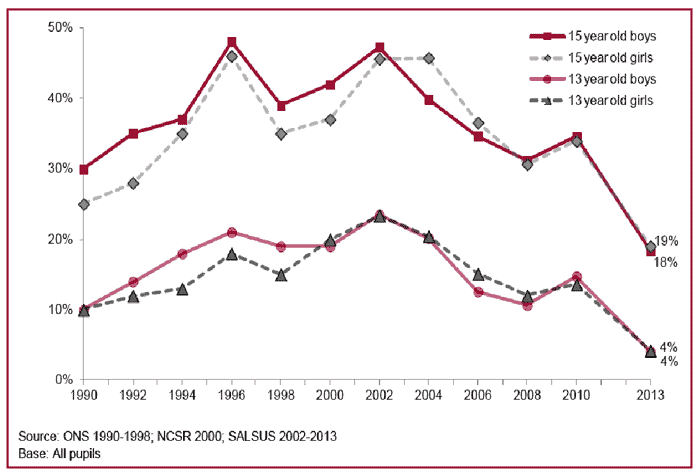
The research was commissioned by the Scottish Government and undertaken by Information Services (ISD Scotland), National Services Scotland and Ipsos MORI Scotland.
In relation to Alcohol use, the main finding was that the proportion of 13 and 15 year olds who reported drinking in the last week was the lowest since the survey series began monitoring drinking behaviour in 1990 (4% of 13 year olds and 19% of 15 year olds). The proportion of pupils who reported drinking alcohol in the last week decreased between 2010 and 2013 (from 14% to 4% for 13 year olds and from 34% to 19% for 15 year olds). In 2013, the proportion of pupils who reported never having had a proper alcoholic drink was higher for both age groups than at any time since 1996 (68% of 13 year olds and 30% of 15 year olds.
There were also marked changes in attitudes towards alcohol use. Since the previous survey, there was a reduction in the proportion of both 13 and 15 year olds who thought it was okay for someone their age to try drinking alcohol to see what it is like (from 52% in 2010 to 42% in 2013 for 13 year olds; from 82% in 2010 to 77% in 2013 for 15 year olds).
The proportion of pupils who thought it was okay for someone of their age to try getting drunk has also declined since 2010(from 13% to 8% for 13 year olds; from 46% to 39% for 15 year olds). Under half (44%) of 13 year olds who had ever had an alcoholic drink had been drunk at least once, compared with over two thirds (70%) of 15 year olds.
Smoking and Other Drugs
Similar declines were also found in relation to smoking and the use of drugs other than alcohol.
Smoking
2% of 13 year olds and 9% of 15 year olds surveyed reported being a regular smoker. The proportion of 13 and 15 year olds who reported being regular smokers in 2013 was the lowest since the survey series began in 1982.
The proportion of pupils who reported that they had never smoked increased from 45% in 2002 to 76% in 2013.
Drug Use
18% of 15 year olds and 4% of 13 year olds reported ever taking drugs. The proportion of pupils who reported that they had used drugs in the month before the survey was the lowest since the survey series began in 1998 (9% of 15 year olds and 2% of 13 year olds).
The proportion of pupils who reported that they had never used drugs was higher in 2013 than at any time since the survey series began in 1998 (82% of 15 year olds and 96% of 13 year olds).
Scotland to host global alcohol conference
More than 500 delegates to gather in Edinburgh
Scotland will host a major international conference in 2015 to look at new ways to reduce alcohol-related harm.
The Global Alcohol Policy Conference (GAPC) will be held in Edinburgh in October 2015, and will attract more than 500 delegates from around the globe, with speakers from Europe, Asia, the USA, New Zealand and South Africa. The event will be co-hosted by the The Global Alcohol Policy Alliance (GAPA) and Alcohol Focus Scotland, and supported by Scottish Government.
On selecting Scotland as the venue, the GAPA board highlighted the initiative and courage shown by Scotland in pursuing minimum unit pricing as an effective policy to tackle alcohol misuse.
The event will focus on trying to build research and advocacy capacity in those parts of the world where alcohol harm is increasing and where regulatory policies are limited. Delegates will aim to strengthen collaboration, networking and the mobilisation of academics and policy makers to create a global movement on alcohol policy, free from the influence of commercial interests.
Previous GAPC conferences have been held in Seoul, South Korea ((2013) and Nonthaburi, Thailand (2011).
The Scottish Government has a package of more than 40 measures it is taking to reduce excessive alcohol consumption. It is committed to introducing a 50p minimum unit price for alcohol sales. It recently became the first country in the UK to introduce a new drink drive limit – 50mg in every 100ml of blood compared to 80mg in the rest of the UK.
Minister for Public Health, Maureen Watt, said:
“Scotland has an excellent reputation for taking decisive and bold action to reduce the harm that excessive alcohol consumption can cause. It is testament to our ambitious alcohol strategies that the Global Alcohol Policy Alliance have chosen to host the 2015 conference in Edinburgh.
“The Scottish Government is proud to be supporting GAPC 2015 and I look forward to sharing our experiences with advocates from around the world”
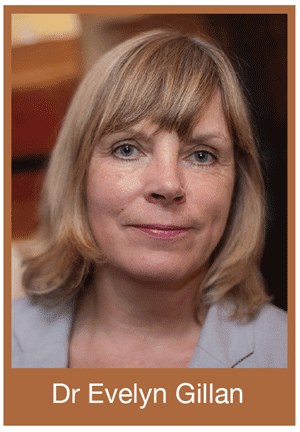 Dr Evelyn Gillan, Chief Executive, Alcohol Focus Scotland said:
Dr Evelyn Gillan, Chief Executive, Alcohol Focus Scotland said:
“Across the world, alcohol causes so much damage to people’s health, to the lives of their families, and to the communities we live in. Harmful use of alcohol causes around 3.3 million deaths every year.
“I would like to extend a warm invitation to researchers, Non-Governmental Organisations, policymakers, and health professionals to join us at GAPC 2015 in Edinburgh. The conference offers a unique opportunity to share knowledge and inspire each other to advocate for the policies that will work to reduce the significant harm that alcohol causes in our countries.”
Background
The Global Alcohol Policy Alliance is a network of non-governmental organisations and people working in public health agencies who share information on alcohol issues and advocate evidence-based alcohol policies, “free from commercial interests”.
Resource centres affiliated to GAPA operate in Africa, the European Union, South America, South East Asia, the USA and Western Pacific regions.
The conference will be held at the Edinburgh International Conference Centre from October 7 to 9 2015.
Conference information is available at www.gapc2015.com
Court rules that harming unborn child with alcohol not a criminal offence
A child born with foetal alcohol syndrome is not legally entitled to compensation after her mother drank excessively while pregnant, the Court of Appeal has ruled. The child, a girl now seven years old, was born with severe brain damage as a direct result of her mother’s drinking while she was in the womb. The girl is now in care. The mother of the child was seventeen years old at the time of the pregnancy.
Lawyers argued her mother had poisoned her unborn child but appeal judges ruled this did not amount to a criminal offence.
The case attracted extensive interest because of the far-reaching ramifications had the decision gone in the child’s favour. Many feared that not just any consumption of alcohol by a pregnant woman would be criminalised, but so too would be any behaviour which could potentially harm the unborn child.
The case was brought by a council in the North West of England, which sought compensation from the government-funded Criminal Injuries Compensation Scheme, as a victim of crime for what it claimed were criminal injuries caused to the child as a result of the mother’s drinking. However, the tribunal which heard the original case did not award compensation. This was because compensation can only be awarded to a person who has been damaged, and for the purposes of the law, an unborn child does not count as a person. In law, a child only becomes a person at birth. The Court of Appeal has now upheld the original decision. Lord Justice Treacy said an “essential ingredient” for a crime to be committed “is the infliction of grievous bodily harm on a person – grievous bodily harm on a foetus will not suffice”.
John Foy QC, representing the council that now has responsibility for caring for the child, told the court that her mother drank the equivalent of 40-57 units of alcohol a day, grossly above the recommended maximum level of consumption for any adult, let alone a pregnant woman.
Mr Foy said the teenager, for whom it was a second pregnancy, was aware of the dangers, adding: “She was reckless as to whether there would be harm to the foetus.
“She foresaw that harm might be caused but went on to take the risk.”
Ben Collins, appearing for the Criminal Injuries Compensation Authority (CICA) had asked the court to reject the legal challenge, telling the judges:
“There is a conflict of ideas about what is or is not dangerous, not only in terms of drink but also in terms of smoking and food.”
He asked whether “a pregnant mother who eats unpasteurised cheese or a soft boiled egg knowing there is a risk that it could give rise to a risk of harm to the foetus” could be accused of a crime.
Mr Collins’ argument carried the day: If the legal position is that an unborn child is not a person and therefore cannot be the victim of a criminal act, then no action by a pregnant woman, however likely to damage the child she is carrying, can be classed as criminal.
The British Pregnancy Advisory Service (BPAS) and the childbirth charity Birthrights welcomed the ruling.
Rebecca Schiller, co-chair of Birthrights, and BPAS’ Chief Executive, Ann Furedi, said it was “an extremely important ruling for women everywhere”.
“The UK’s highest courts have recognised that women must be able to make their own decisions about their pregnancies,” they said.
“Both the immediate and broader implications of the case were troubling. In seeking to establish that the damage caused to a foetus through heavy drinking was a criminal offence, the case called into question women’s legal status while pregnant, and right to make their own decisions.”
‘Wake-up call’
Neil Sugarman, the solicitor acting for the child, said the decision was “clearly disappointing”. He said GLP Solicitors, of which he is managing partner, represents about 80 other children with FAS and that they would now be looking at the implications of the ruling.
The only legal option left is to seek to take the case to the Supreme Court.
Julia Brown, Chief Executive of the Foetal Alcohol Spectrum Disorders (FASD) Trust, told the BBC the case highlighted the need for pregnant women to be given advice about drinking, and support to stop drinking if necessary.
“There are no winners in a case like this,” she added, saying she hoped it would be a “wake-up call” to make people think about the dangers of drinking when pregnant.
Janet Fyle, professional policy advisor for the Royal College of Midwives, also welcomed the ruling. She said: ‘We welcome this ruling as it reinforces the current law on the status of the fetus and offers protection to pregnant women, rather than criminalising them for engaging in behaviour which is legal but is likely to cause harm to her. It is important to give a clear message about alcohol avoidance in pregnancy because of the risks it presents to the health of both the mother and baby.”
TV star says think twice about how much you’re drinking
Balance, the North East Alcohol Office has recruited actress Charlie Hardwick to be the voice behind a North East of England campaign urging women to think twice and limit how much they drink to reduce their breast cancer risk.
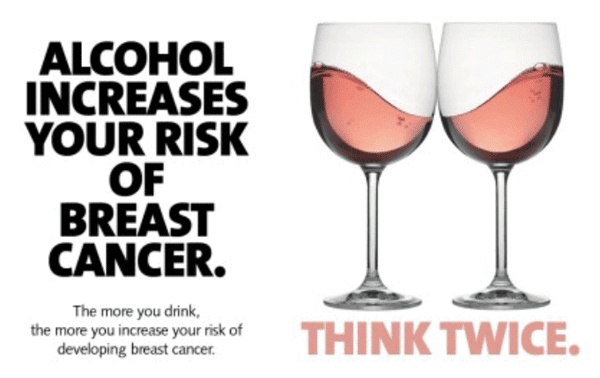
The Think Twice campaign, launched by Balance, in association with Breakthrough Breast Cancer, aims to increase awareness of the link between alcohol and breast cancer, encourage women to take stock of their alcohol intake and, if necessary, cut back.
The campaign informs women that regularly drinking alcohol – even just one drink a day – increases their risk of developing the disease, which is the most common cancer in the UK.
However, two-thirds of women in the North East don’t realise that the more they drink the greater their risk of breast cancer.
To coincide with the start of Alcohol Awareness Week (17–23 November 2014), the campaign was launched on the region’s airwaves with a radio advert featuring the North East TV star.
In the advert, Charlie says: “I’m a worldly woman and I’d like to think I’ve gained a bit of knowledge in my time. But I’ll tell you something, I didn’t know about the proven links between alcohol and breast cancer. Until now.
“The more you drink the more you increase your risk of developing breast cancer. Now there aren’t many ways we can reduce our risk. But limiting the amount we drink is one. And that made me think twice.
“I just thought, ‘isn’t this something women should know about?’ Which is why I support this message from Breakthrough Breast Cancer and Balance.”
One in eight women develop breast cancer in their lifetime but the individual level of risk varies from person to person, depending on a number of factors such as genes, lifestyle and environment. Drinking alcohol is one of the few contributing factors that can be changed to help reduce a woman’s risk of developing the disease.
Studies have shown that:
- In a group of 100 women who do not drink, around 11 are likely to develop breast cancer during their life
- In a group of 100 women who drink two units a day – which is the equivalent of a standard glass of wine – about 14 will develop breast cancer
- In a group of 100 women who drink four units a day – the equivalent of a large glass of wine and a single measure of spirits – about 16 will develop breast cancer
Colin Shevills, Director of Balance, said: “Breast cancer is a devastating disease that affects thousands of women across our region. Alcohol is linked to thousands of breast cancer cases each year across the UK so anything that can be done to raise awareness of this issue is vitally important. This is why we have launched our Think Twice campaign.
“Here in the North East, around two in three women are unaware that the more they drink the greater their risk of breast cancer. That’s a significant proportion and we need to raise awareness.
“Although there are many uncontrollable factors that increase a woman’s risk of developing the disease, such as genetics and age, there are a few things women can do to reduce their risk. Limiting the amount of alcohol they drink is amongst the most significant of these.”
The Think Twice radio advert is backed up by an online film – also voiced by Charlie – which highlights the alcohol and breast cancer link.
This will be further supported with a hard-hitting regional TV and cinema health campaign, which features a man drinking from a pint of lager with a growing tumour at the bottom of the glass. The wider campaign is aimed at increasing awareness of the link between alcohol and seven types of cancer including mouth, bowel and liver.
Colin Shevills added:
“Alcohol is a Group 1 carcinogen, like tobacco, and measures need to be put in place to ensure people have access to all the necessary information which supports good, healthy choices.
“The Government has a key role to play here by ensuring transparency. The introduction of health warnings on all alcoholic drinks would help tackle the problem. However, information alone is not enough. To turn back the tide of alcohol misuse, we require a multi-faceted approach which includes the introduction of a minimum price per unit of alcohol and the curbing of alcohol marketing.”
Using breathalysers to bar drunks
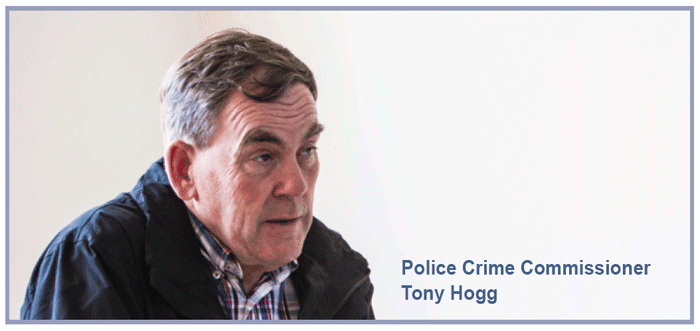
Christmas revellers will be turned away from Torquay nightspots if they arrive at the door already drunk.
The RU2drunk scheme is a ‘breathalyse on entry’ initiative run by South Devon police in Torquay during December 2014. It aims to reduce anti-social behaviour and violent crime in Torquay during the night-time in pubs and clubs in the area. It is funded by the Office of the Police Crime Commissioner who paid for the breath boxes and tubes. Two University of Exeter researchers, Dr Hannah Farrimond and Dr Katharine Boyd are supporting the evaluation of the RU2drunk initiative. It is set up as a real-world experiment, with another similar town as the control group and Torquay as the intervention group, with all 23 licensed establishments taking part. This pilot evaluation is part of a wider collaborative approach to research into addiction and violence to help the police develop evidence-based policies in relation to alcohol and the night-time economy.
Each premises will be able to set its own upper limit, but, in general, anyone giving a reading more than twice the drink-drive limit may be refused entry by door staff, who have been trained by police to use equipment normally used for roadside breath tests.
In Torquay, 20% of all violence against the person is attributable to the evening and night time economy and the majority of these offences happen in the harbourside area. Police have increased patrols in the area and work with partner agencies but now want to work more closely with licensees who identify pre-loading as the biggest contributor to alcohol related violence. And while drunks bring significant costs to licensed premises, figures show they spend as little as £7 per head when they do get in.
Devon and Cornwall Police Crime Commissioner, Tony Hogg, said he is very happy to support and fund the pilot.
“The impact of alcohol related crime on our communities and public services is not sustainable. If we are to address this issue we need everyone to play their part – public services, communities, licensees and drinkers. I am delighted to see the trade united in taking action here,” he said.
“Drinkers need to realise that there are immediate consequences of getting too drunk on a night out, drink too much too early and your night out may never get started!
“Pilots in Norwich showed a dramatic reduction in alcohol related crime and if we see similar results from the Torquay pilot I will be encouraging wider roll-out in Devon and Cornwall.
“They won’t be suitable for every area – and are not a panacea – but they could be an important tool in the arsenal.”
Force lead, Chief Inspector Neil Ralph, said: “This pilot is not there to ban fun, or stop patrons from coming in, but to keep Torquay safe so everyone can have an enjoyable evening, free from trouble.
“In December we usually see an increase in public place violence linked to alcohol and we hope the ‘breathalyser on entry’ pilot will be an effective tool in reducing this. It has been used elsewhere in the country in making people think about the amount of alcohol they have consumed.”
The scheme has already been rolled out in other parts of the country, including Loughborough and Nottingham, and been successful in reducing violent crime. The drink drive limit is 35 microgrammes per 100 millilitres of breath, meaning revelers face being barred if they give a reading of 70 microgrammes or more. Police will also be out on the streets at violence hot spots where they will tackle binge drinking by issuing warnings to those heavily under the influence of alcohol, and asking the worst offenders to leave town centres.
Scotland: Homicides at lowest ever levels
But alcohol or other drugs still involved in majority of cases
The number of homicide cases in Scotland has dropped to its lowest level on record, according to new statistics.
Figures from Homicide in Scotland 2013-14 show there were 61 homicide victims in the last 12 months reported, a drop on the previous year and the lowest number since current records began in 1976. Police have identified the accused for all of the 60 cases.
The statistics show similar trends to previous years, that the majority of cases took place in a house or flat (63%), between victims and accused that were known to one another (70%). Sharp objects, including but not exclusively knives, were the main methods of killing; however, these levels are also at their lowest since current records began.
The decline in homicide is consistent with the decline in alcohol consumption over the same period. For those accused of homicide in 2013-14, over half (52%, or 46 people) were under the influence of alcohol and/or drugs. In only a small fraction of instances (2%) was the accused under the influence of drugs only. For just under a third (30%, or 26 people) of those accused, the alcohol and drug status was unknown.
Commenting on the figures, Justice Secretary Michael Matheson said:
“It is concerning that alcohol and drugs continue to be factors in over half of homicides and is another stark reminder of the devastating social harm these substances can cause. This is one reason why we are continuing in our efforts to encourage people to drink less alcohol, maintaining our commitment to introduce minimum pricing, and to tackle the scourge of cheap, strong alcohol. Our national drugs strategy is also having an effect and problem drug use is also falling, particularly amongst young people.”
Public Health England publishes new guidance on responding to young people with alcohol harm in hospital settings
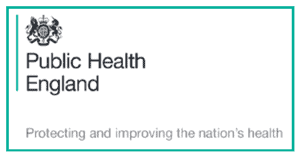 Public Health England has published Young people’s hospital alcohol pathways: Support pack for A&E departments
Public Health England has published Young people’s hospital alcohol pathways: Support pack for A&E departments
The guidance shows how local pathways can work for young people who present to A & E with alcohol-related conditions. It builds on similar publications by the National Institute for Health and Care Excellence (NICE) and Alcohol Concern.
The pack includes a set of key questions for local professionals to help them develop effective care pathways within A & E and into other relevant services. It will be most relevant for A & E clinicians, hospital managers, substance misuse and young people’s commissioners. It may also have wider interest for local authority children’s services and organisations that are part of the pathway, such as substance misuse services and other young people’s support agencies.
The document has been developed by PHE with expert input from the College of Emergency Medicine, Royal College of Nursing, Royal College of Psychiatrists, Alcohol Concern, the National Addiction Centre at King’s College London, commissioners and providers.
The document can be downloaded from: http://www.nta.nhs.uk/uploads/young-peoples-hospital-alcohol-pathways-support-pack-for-ae-departments.pdf

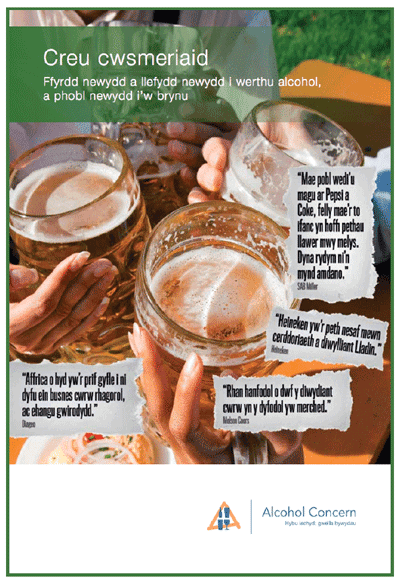 Alcohol Concern exposes alcohol tactics “to create new customers”
Alcohol Concern exposes alcohol tactics “to create new customers”
A new report from Alcohol Concern Wales analyses how alcohol producers find new ways and places to sell alcohol, and new people to sell it to – in the UK and around the world.
The report, Creating Customers: Finding new ways and places to sell alcohol, and new people to buy it criticises how alcohol is marketed to women, both as a calorie-laden indulgence and as an aid to weight loss, and to particular ethnic groups; and exposes how big drinks companies are working to drive up consumption in parts of Africa, Asia and Latin America where levels of drinking have traditionally been low. It also argues that the industry undermines it own pledges to encourage the safe use of alcohol.
Whilst recognising that alcohol is a legitimate product, the report argues that the drinks industry’s business imperative to sell more alcohol means it is not well placed to advise us how to use it safely and healthily. It includes a series of recommendations for effective regulation of the alcohol industry and its marketing campaigns, and for ending the industry’s involvement in formulating public policy and information on safe drinking.
The report can be downloaded from: http://www.alcoholconcern.org.uk/for-professionals/publications/publications-for-wales/
Cancer Research UK warns “boozy young Brits” about calorie intake dring festive season
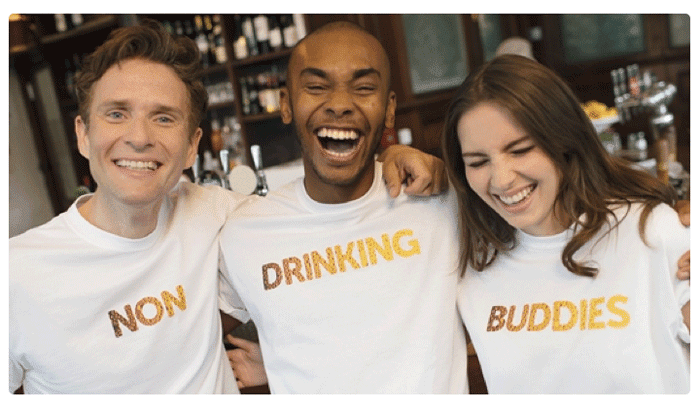
As the nation geared up for the festive season, Cancer Research UK issued a warning about all the extra calories from food and drink, particularly among 18-34 year olds.
New figures from Cancer Research UK’s Dryathlon® indicate that the average young British adult will consume an estimated 3,700 calories in alcohol alone on evenings out and parties throughout the Christmas season.
Dryathlon is CRUK’s initiative challenging people to give up alcohol during January as a way of reducing their risk of getting cancer.
CRUK explained that the calories from alcohol equated to consuming around 200 chocolate gold coins, and this number of calories would take around seven hours of jogging to burn off.
“December is upon us again and, for most of us, this means a surge of parties and nights out. All the socialising during this time could result in us Brits consuming far more calories than we realise through alcohol alone”, said Anthony Newman, Director of Marketing at Cancer Research UK.
The research, which asked 2,000 adults of a wide age-range about their drinking habits, was commissioned by Cancer Research UK to mark the launch of Dryathlon®.
Over a third (36%) of adults who drink named wine as their favourite drink during the festive season, yet more than 9 in 10 (95%) didn’t know roughly how many calories there are in a standard glass (175ml) of wine.
Drinkers were also oblivious when it came to the amount of calories in beer. Despite a fifth (22%) saying they prefer to drink beer, more than 9 in 10 (95%) of Brits didn’t know approximately how many calories there were in a standard pint of beer.
Alcohol at centre of dispute on London Underground
Services on London Underground’s Northern Line were disrupted in December when the RMT Union called a 24-hour strike in protest at the sacking of one of its members, a train operator, who was alleged to have infringed the no-alcohol rule.
However, the exact circumstances of the case were disputed. The RMT Union claimed that the train operator was being victimized and that Transport for London was behaving improperly. RMT General Secretary, Mick Cash, said: “Our members are standing rock-solid, shoulder to shoulder with their victimised colleague and, as we have said all along, the union is determined to secure a just and fair outcome to this dispute. Once again, the Transport for London advice to the public is contradictory and dangerous.”
The Union issued a press statement from Mick Cash to union members claiming that throughout the case, “management has admitted it failed to follow the agreed procedures and has not committed to meaningful discussions aimed at resolving the matter. They have yet again resorted to underhand tactics and following a written complaint, I have received an apology from TfL Commissioner Peter Hendy over his statement made recently that our member was found to be drinking at work, which he now accepts is completely untrue. I urge all affected members to stand firm together and support this strike action to demand justice and demand that your colleague Brother Alex McGuigan is rightly vindicated and reinstated by London Underground. This culture of harassment and victimisation at London Underground cannot be allowed to continue any longer!”
However, according to press reports and statements by senior managers at London Underground, McGuigan was actually sacked because he had failed a breathalyzer test. Phil Hufton, London Underground’s chief operating officer, was reported as saying: “The RMT has absolutely no basis to take strike action after one of their members was dismissed for failing an alcohol breath test. To ensure the safety of our employees and customers, we operate a zero-tolerance policy towards alcohol at work. At no point to date has the RMT leadership disputed our alcohol testing process, which is fully in line with medical standards and is representative of best practice in the rail industry.”
In the event, there was only minor disruption on the Northern Line as the majority of staff defied the strike call and reported for work as usual.
London Underground’s workplace policy on alcohol and other drugs is longstanding. It was reportedly introduced in 1992 in response to the legal requirements of the Transport and Works Act. The company has strict alcohol and drugs standards, supported by rigid testing procedures, which apply to contractors and consultants as well as its own staff. LU is committed to helping those employees who come forward with a drug or alcohol problem to make a full recovery and return to work. To facilitate this, LU has an extensive advice, treatment and rehabilitation service.
Huddersfield scientists develop breakthrough compound reducing harmful side-effects of ‘binge drinking’, and offering potential new ways to treat Alzheimer’s and other neurological diseases that damage the brain
A drug that could reduce the harmful side-effects of ‘binge drinking’, especially by teenagers, has been successfully developed and tested by a team of European scientists, including the University of Huddersfield’s Professor Mike Page and Dr Karl Hemming. There is also the potential for new ways to treat Alzheimer’s and other neurological diseases that damage the brain.
The key to the breakthrough is a compound developed by Professor Page and colleagues at the University of Huddersfield, which is named ethane-beta-sultam. This is a taurine ‘pro-drug’ – an effective form of medication that easily enters the blood stream before it is processed by the body into its active form. It is difficult for drugs to get into the brain because of the ‘blood-brain barrier’, the natural defence mechanism that protects the brain, but which also presents a formidable obstacle to the medicinal treatment of neurological illness.
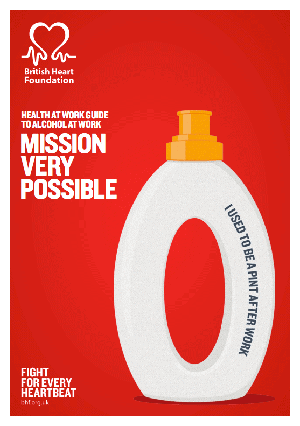 Guide to alcohol in the workplace published by British Heart Foundation
Guide to alcohol in the workplace published by British Heart Foundation
A new guide to promoting alcohol awareness in the workplace has been published by the British Heart Foundation, the 6th booklet in the BHF’s Health at Work toolkit.
The booklet is aimed at workplaces and includes the rationale behind raising alcohol awareness, guidance on writing policy and developing a healthier work culture, as well as fun ideas for events and activities.
The Guide can be downloaded from:
www.bhf.org.uk/publications/workplace-health/health-at-work-guide-to-alcohol
Podcast
Our monthly podcast features interviews with experts from across the sector.
How to shift the dial on alcohol policy in Europe
Florence Berteletti –
Eurocare
Anamaria Suciu –
Eurocare

